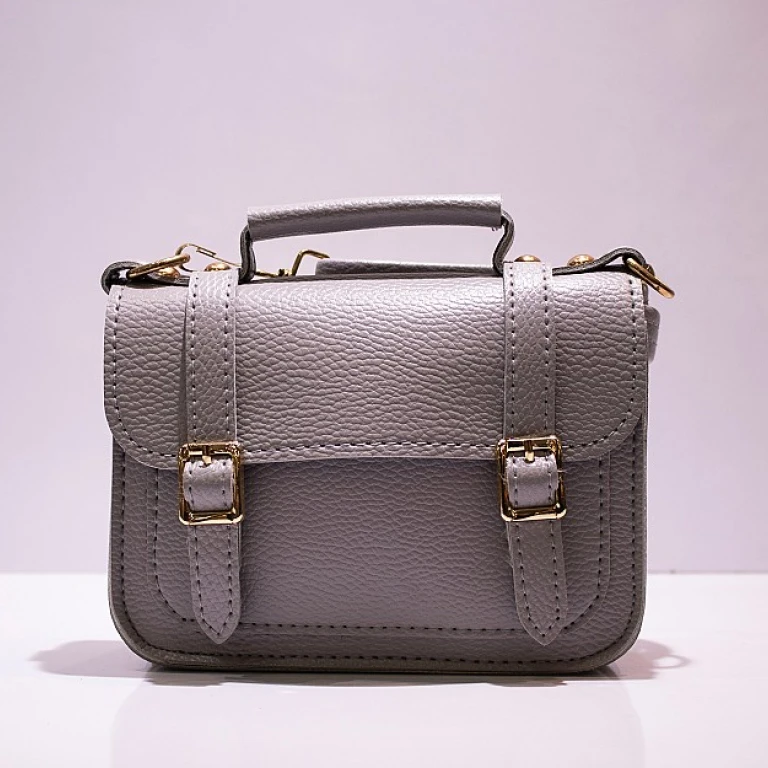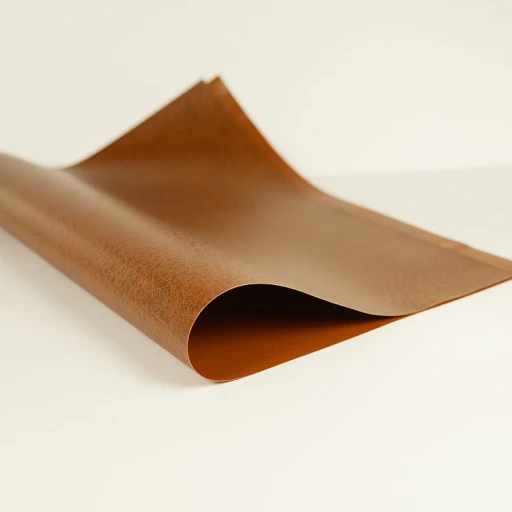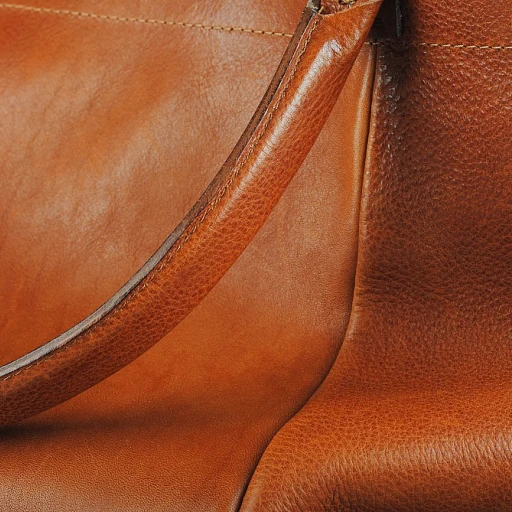The New Era of Leather Craftsmanship: Combining Tradition and Technology
Tradition Marries Innovation: The Rise of Digitized Leather Craftsmanship
The luxury leather goods market has historically been rooted in artisanal heritage, with a strong emphasis on manual skill and detail. However, recent statistics indicate a growing trend towards incorporating technology in leather craftsmanship. A 2022 report highlighted that 35% of luxury consumers now seek products that represent a blend of tradition and innovation. The emergence of digital tools in the leather crafting process has not only enhanced the precision of designs but also facilitated bespoke customization options, enabling brands to cater to the unique preferences of their discerning clientele.
The Revolution of Traditional Techniques with Cutting-edge Technology
Investing in technology has become a pivotal strategy for luxury leather goods manufacturers. Cutting-edge software for pattern making and 3D modeling is revolutionizing how artisans develop prototypes. A recent study showed that the introduction of 3D technology reduces the time to market for new products by up to 50%. This innovative approach does not detract from the value of traditional craftsmanship; instead, it amplifies the very essence of what makes a piece luxurious - its exclusivity and tailored perfection.
Leveraging AI for Enhanced Design Authenticity
Artificial Intelligence (AI) is another powerhouse entering the luxury leather niche. As noted by market analysts, AI's role in pattern recognition and predicting design trends has been pivotal in maintaining brand relevance. Top-tier luxury leather brands are now harnessing AI to analyze market data and customer preferences, ensuring that their offerings are both timeless and on-trend. According to an industry report, AI implementations have led to a 25% increase in customer satisfaction for bespoke luxury items.
Seamless Integration of E-Commerce and Customer Experience
The global digital landscape is reshaping the way luxury goods are sold and marketed. E-commerce platforms, augmented by virtual reality, provide customers with an immersive experience that rivals in-store shopping. A survey from 2021 revealed that 40% of luxury purchases are influenced by the digital experience offered. By integrating these platforms with traditional sales avenues, luxury leather goods producers are not only staying ahead of the curve but also nurturing a more personalized relationship with their clientele.
Digital Design and Precision: Tailoring the Unparalleled Luxury Experience
Tailoring the Future of Personalized Elegance
The burgeoning intersection of digital design and luxury leather goods is reinvigorating the market, potentially revolutionizing the luxury experience for discerning consumers. Innovatively, digital technologies offer an unprecedented level of precision and personalization, elevating the standards of craftsmanship. According to a study by Deloitte, one-third of consumers are interested in personalized products, with 71% ready to pay a premium for such embellishments.
Enhancing Designs with High-End Technology
Leading luxury brands are harnessing advanced softwares such as computer-aided design (CAD) and virtual reality (VR) to refine their designs and create intricate patterns unachievable by hand alone. This marriage of technology and tradition is well captured in the renowned Hermes's utilization of innovative laser cutting techniques, ensuring every cut is impeccably precise – a true testament to emerging artisans weaving excellence into luxury leather.
Revolutionizing the Prototyping Process
The prototyping phase has been dramatically shortened thanks to 3D printing, reducing material waste and enhancing design fidelity. Statista reports that the use of 3D printing in the production of leather goods has escalated by 20% over the past two years, allowing for meticulous testing and modification before the final product is realized.
Seamless Integration into the Consumer Lifestyle
The digital era has brought about a surge in consumer demand for products that align perfectly with their unique lifestyles. The integration of digital craftsmanship enables a level of customization that speaks directly to the individual, offering a seamless experience. For instance, Louis Vuitton's 'My LV World Tour' embodies this ethos, allowing customers to add a personal touch with bespoke monogram options, a service that blends the brand's storied heritage with state-of-the-art technology.
Sustainability in the Digital Age: Eco-Friendly Production Meets High Fashion
Efficiency and Elegance: Modern Methods in Eco-Friendly Leather Production
Within the realm of luxury leather goods, an ongoing evolution is the integration of eco-friendly practices—an essential stride in meeting the demands of the discerning and conscious consumer. In fact, sustainability has become a non-negotiable element for luxury brands, with 85% of consumers now demanding ethically produced items, according to a Nielsen report. By harnessing digital technology, luxury leather good artisans are not only able to craft products with precision and personalization, but can also ensure a lower carbon footprint. This translates into efficient use of resources, reduced waste, and often, a direct reduction in the water and chemical usage typically associated with traditional leather tanning and dyeing processes.
The shift towards digital manufacturing tools, including laser cutting and 3D printing, has enabled brands to optimize their material usage. This not only conserves valuable hides but also minimizes off-cuts, resonating with the zero-waste philosophy certain luxury buyers admire. To illustrate, innovative CAD software can plot cutting layouts that maximize hide usage, decreasing material waste by up to 10-15%.
The Greening of Luxury: Biodegradable and Recycled Materials Raising the Bar
Another pioneering stride in the sustainable luxury leather sector is the development of biodegradable leathers and the use of recycled leather materials. These advancements not only alleviate the environmental impact but also generate a new echelon of luxury items that champion eco-responsibility. Brands that incorporate such materials are often heralded at the forefront of the luxury market, as they align with the values of transparency and environmental stewardship. Remarkably, the use of recycled leathers can potentially save approximately 90% of the water and 80% of the CO2 usually required for leather production, as stated by the Leather Panel.
For an insider look into how luxury brands seamlessly blend traditional artisanship with eco-conscious practices, visit our expose on the emergence of artisan leather-makers in today’s high fashion landscape.
Revolutionizing Tanning Processes: A Shift to Vegetal and Chrome-Free Solutions
Drastically reducing the environmental footprint is the luxury industry's adoption of innovative tanning methods. Traditional tanning often relies on heavy chemicals, but the rise of vegetal and chrome-free tanning alternatives signifies a meaningful leap towards sustainability. These methods are not only kinder to the planet but also appeal to luxury consumers seeking all-natural and non-toxic premium products. Recent statistics highlight that chrome-free leather options have surged in popularity, with an expected annual growth of 6% in the market share within the next five years, according to Grand View Research.
Utilizing vegetal tanning processes, artisans can offer a range of hues and finishes while maintaining the leather’s natural characteristics—celebrating the beauty of eco-luxury. Not to mention, vegetal tanning aligns with the holistic approach of preserving the artisanal heritage as it involves natural elements such as tree bark and leaves, echoing the handcrafting traditions that define luxury leather goods.
Craftsmanship Education in the Digital Realm: Preserving Skills through Innovative Platforms
Pioneering Digital Learning and Mentorship in Leather Arts
The landscape of luxury leather goods training is experiencing a significant transformation. Advancing technologies have made it possible for aspiring artisans to procure skills traditionally passed down through hands-on apprenticeships, now via digital platforms. According to a report by Forbes, the e-learning market is expected to reach $325 billion by 2025, indicating a colossal shift in educational methods, including in the realm of high-end craftsmanship.
- In-depth video tutorials by master craftsmen with global reach
- Interactive online workshops for real-time skill refinement
- Virtual apprenticeships offering feedback and guidance
Reinventing Tradition: Virtual Craftsmanship Communities
Social media groups and online forums have become fertile ground for mentorship in the digital era. A survey by McKinsey shows a 20% increase in consumer engagement in online communities since the onset of the digital boom. These virtual gatherings foster innovation and collaboration among leather artisans, allowing them to preserve age-old techniques while embracing modern practices.
- Discussion boards dedicated to the sharing of leatherworking secrets
- Collaborative projects that blend traditional craftsmanship with cutting-edge ideas
- Networks of luxury leather goods enthusiasts supporting emerging talents
Embracing Digital Archives for Craft Preservation
Venerable institutions and luxury brands are curating digital archives, preserving centuries of craftsmanship wisdom for future generations. As noted by the World Economic Forum, digital archives play a critical role in safeguarding cultural heritage, elements of which define the luxury leather goods market. These archives not only secure knowledge but also provide inspirational resources for designers seeking to merge tradition with innovation in luxury leather products.
- High-resolution imaging capturing the intricacies of historic leather pieces
- Comprehensive databases cataloging techniques and designs
- AI-powered tools to explore complex patterns and decorations used in classical leather goods


-large-teaser.webp)
-large-teaser.webp)
-large-teaser.webp)
-large-teaser.webp)
